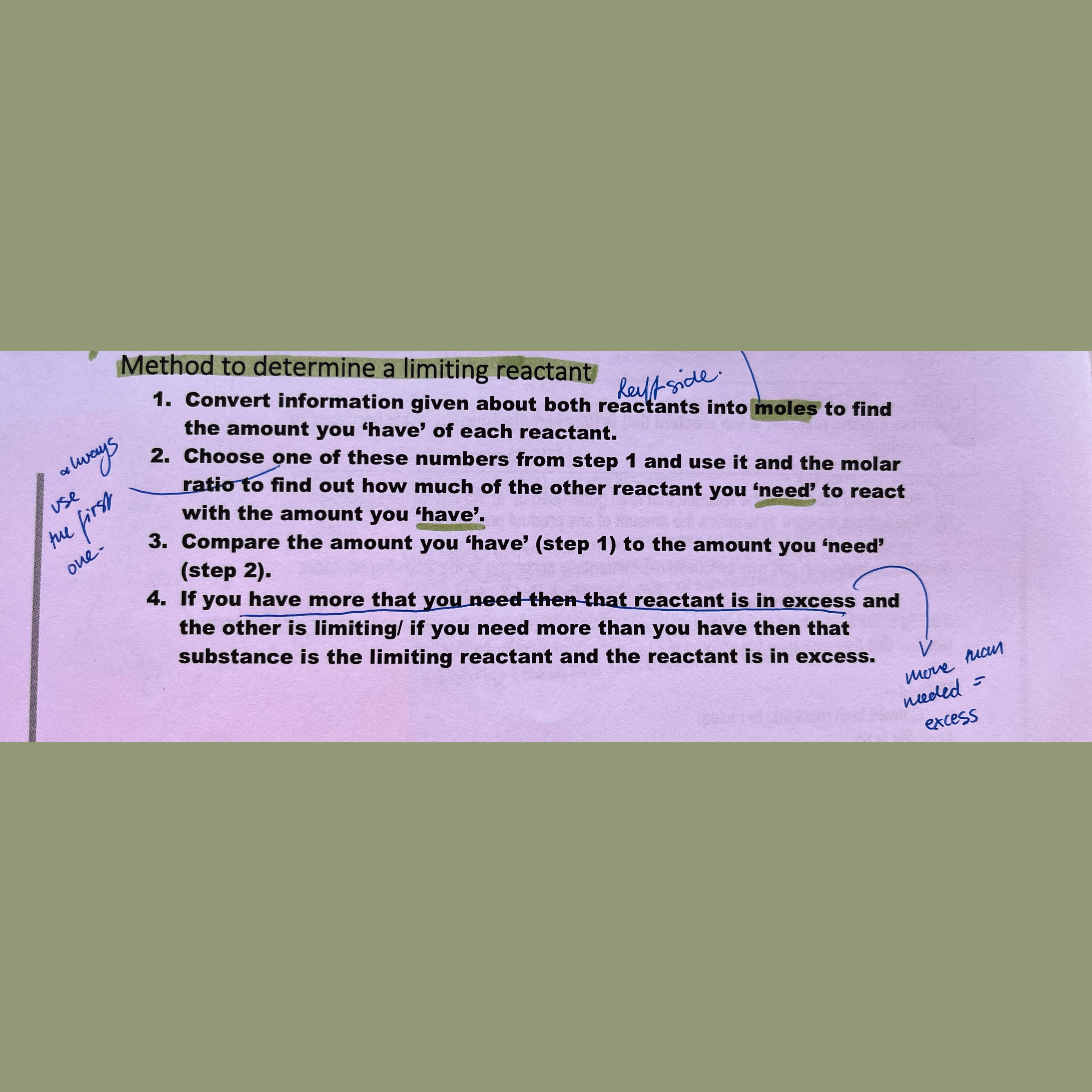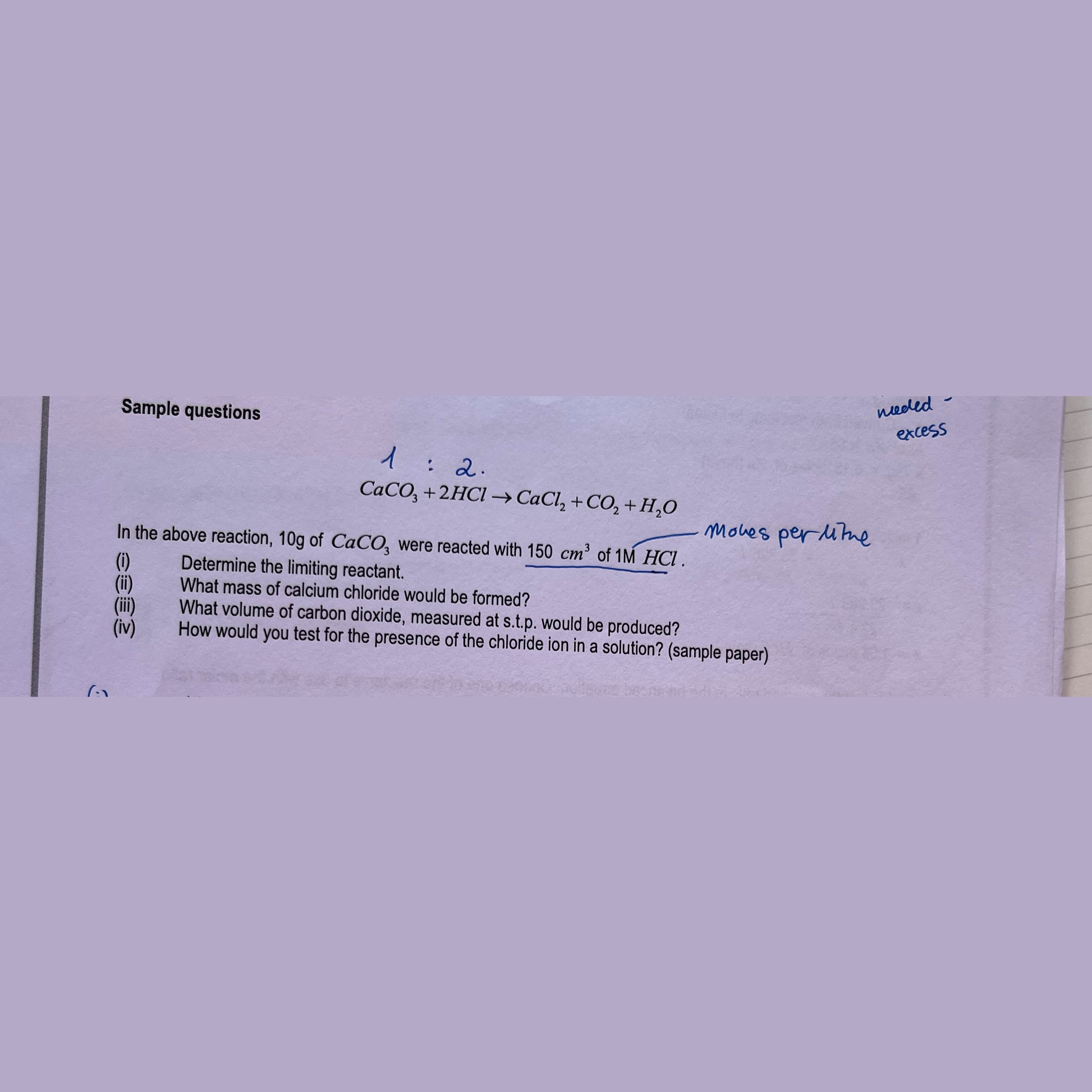Calculations from Balanced Equations
0.0(0)
Card Sorting
1/10
There's no tags or description
Looks like no tags are added yet.
Study Analytics
Name | Mastery | Learn | Test | Matching | Spaced |
|---|
No study sessions yet.
11 Terms
1
New cards
What volume of carbon dioxide in litres, at room temperature and pressure, was produced in this neutralisation reaction? \[LC 2004 Stoi.4 pg 6\]
* notice that is said room temperature and pressure, __not standard__ room temperature and pressure
* So we use molar volume 24L and not 22.4L
* So we use molar volume 24L and not 22.4L
2
New cards
Mass=(_)(_)
mass=density(volume)
3
New cards
What is a limiting reactant/part in a reaction?
It is the reaction that is completely used up first, and therefore determines the stop of the reaction
4
New cards
What is the excess reactant in a reaction?
It is the leftover reactant that remains after the limiting reactant is consumed.
5
New cards
The __________ is the reactant that is completely consumed in a chemical reaction, limiting the amount of product that can be formed.
limiting
6
New cards
Excess reactant is a reactant that is present in ___________ amount than the stoichiometrically required amount for a chemical reaction.
excess, surplus
7
New cards
List the method to determine a limiting reactor in a reaction
1. Change information about products and reactants to moles
2. Choose prod/reactant molar no. and use it and the molar ratio to see how much you need vs. have.
3. Compare

8
New cards

Answer Question (i) Determine the limiting reactant
HCl
9
New cards
To find the amount of product prodced the ___ reactant must be used for the ration/working out.
Limiting because the amount of product is determined by the limiting reactant.
* The result is known as the theoretical yield or the maximum yield/ 100% perfect reaction
* The result is known as the theoretical yield or the maximum yield/ 100% perfect reaction
10
New cards
How do you know if products are gaseous?
\[g\]
11
New cards
How is % yield calculated?
actual yield / theoretical yield (100)
\-actual yield=reaction of result
\-theoretical yield= in a perfect scenario result
\-actual yield=reaction of result
\-theoretical yield= in a perfect scenario result